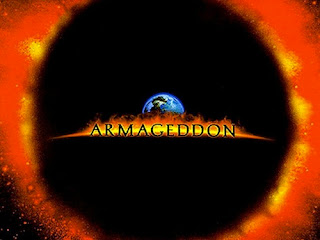Today on Far Future Horizons we explore two of the most intriguing astronomical objects discovered in the nineteen sixties namely, Pulsars and Quasars.
The first pulsar was observed in July 1967 by Jocelyn Bell Burnell and Antony Hewish. And created an initial flurry of excitement when the radio pulses emanating from these enigmatic objects where artificial signals coming from an extraterrestrial civilization. In fact the first pulsar discovered was briefly designated LGM-1 for little green men.
Later it dawned on Astronomers that these pulsating objects were in fact the remnants of the incredibly compressed cores of massive stars left over after their demise in a supernova explosion.
The word "pulsar" is a contraction of "pulsating star", and first appeared in print in 1968:
An entirely novel kind of star came to light on Aug. 6 last year and was referred to, by astronomers, as LGM (Little Green Men). Now it is thought to be a novel type between a white dwarf and a neutron [sic]. The name Pulsar is likely to be given to it. Dr. A. Hewish told me yesterday: "… I am sure that today every radio telescope is looking at the Pulsars."
The suggestion that pulsars were rotating neutron stars was put forth independently by Thomas Gold and Franco Pacini in 1968, and was soon proven beyond reasonable doubt by the discovery of a pulsar with a very short (33-millisecond) pulse period in the Crab nebula.
In 1974, Antony Hewish became the first astronomer to be awarded the Nobel Prize in physics. Considerable controversy is associated with the fact that Professor Hewish was awarded the prize while Bell, who made the initial discovery while she was his Ph.D student, was not.
Quasars (quasi-stellar radio sources) are the incredibly energetic cores of distant galaxies powered by supermassive black holes.
The first quasars were discovered with radio telescopes in the late 1950s. Many were recorded as radio sources with no corresponding visible object. Using small telescopes and the Lovell Telescope as an interferometer, they were shown to have a very small angular size.[4] Hundreds of these objects were recorded by 1960 and published in the Third Cambridge Catalogue as astronomers scanned the skies for the optical counterparts. In 1960, radio source 3C 48 was finally tied to an optical object. Astronomers detected what appeared to be a faint blue star at the location of the radio source and obtained its spectrum. Containing many unknown broad emission lines, the anomalous spectrum defied interpretation — a claim by John Bolton of a large redshift was not generally accepted.
In 1962 a breakthrough was achieved. Another radio source, 3C 273, was predicted to undergo five occultations by the moon. Measurements taken by Cyril Hazard and John Bolton during one of the occultations using the Parkes Radio Telescope allowed Maarten Schmidt to optically identify the object and obtain an optical spectrum using the 200-inch Hale Telescope on Mount Palomar. This spectrum revealed the same strange emission lines. Schmidt realized that these were actually spectral lines of hydrogen redshifted at the rate of 15.8 percent. This discovery showed that 3C 273 was receding at a rate of 47,000 km/s. This discovery revolutionized quasar observation and allowed other astronomers to find redshifts from the emission lines from other radio sources. As predicted earlier by Bolton, 3C 48 was found to have a redshift of 37% the speed of light.
The term quasar was coined by Chinese-born U.S. astrophysicist Hong-Yee Chiu in 1964, in Physics Today, to describe these puzzling objects:
"So far, the clumsily long name 'quasi-stellar radio sources' is used to describe these objects. Because the nature of these objects is entirely unknown, it is hard to prepare a short, appropriate nomenclature for them so that their essential properties are obvious from their name. For convenience, the abbreviated form 'quasar' will be used throughout this paper."
– Hong-Yee Chiu in Physics Today, May, 1964
To learn more about these objects watch today’s exciting video feature from the highly acclaimed television series currently airing on the History Channel - The Universe.























+1.jpg)













.jpg)

.jpg)
+1.jpg)
+3.jpg)








